Deployable (Folding) Structures
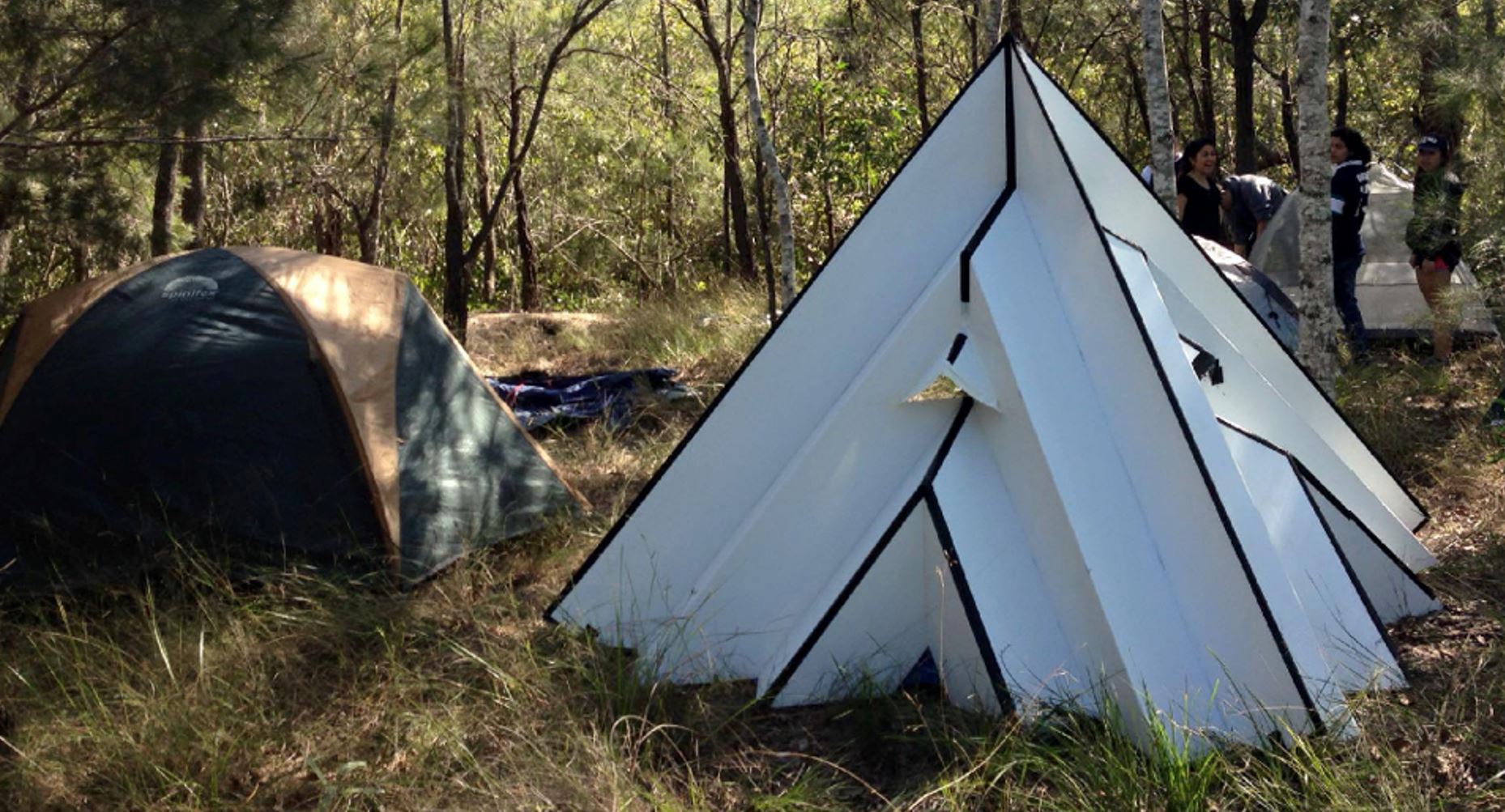
Morphing Sandwich Structures
This research explores rigid-foldable morphing sandwich mechanisms based on the Miura origami pattern, developing an alternative mechanism with enhanced stability and locking features compared to previous models, as demonstrated with steel prototypes. It extends this concept to a new family of morphing sandwich structures, including fan-shaped, cylindrical, and conical mechanisms. These are created by substituting the base Miura core pattern with a derivative and attaching faces ensuring compatible rigid-foldability and avoiding self-intersection during deployment, validated with physical prototypes. Further information: DOI: 10.1016/j.engstruct.2015.03.019.
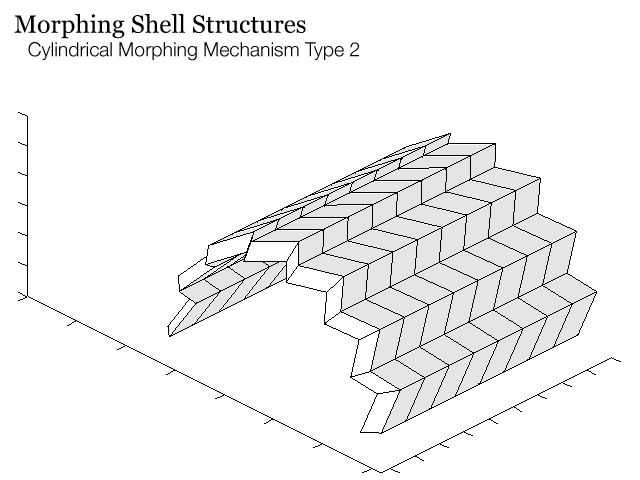
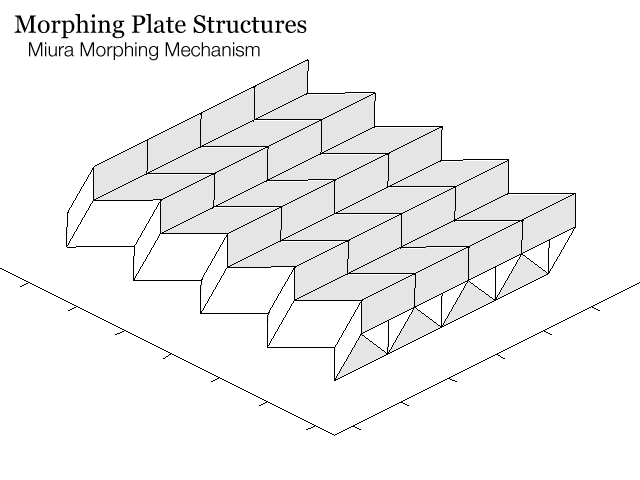
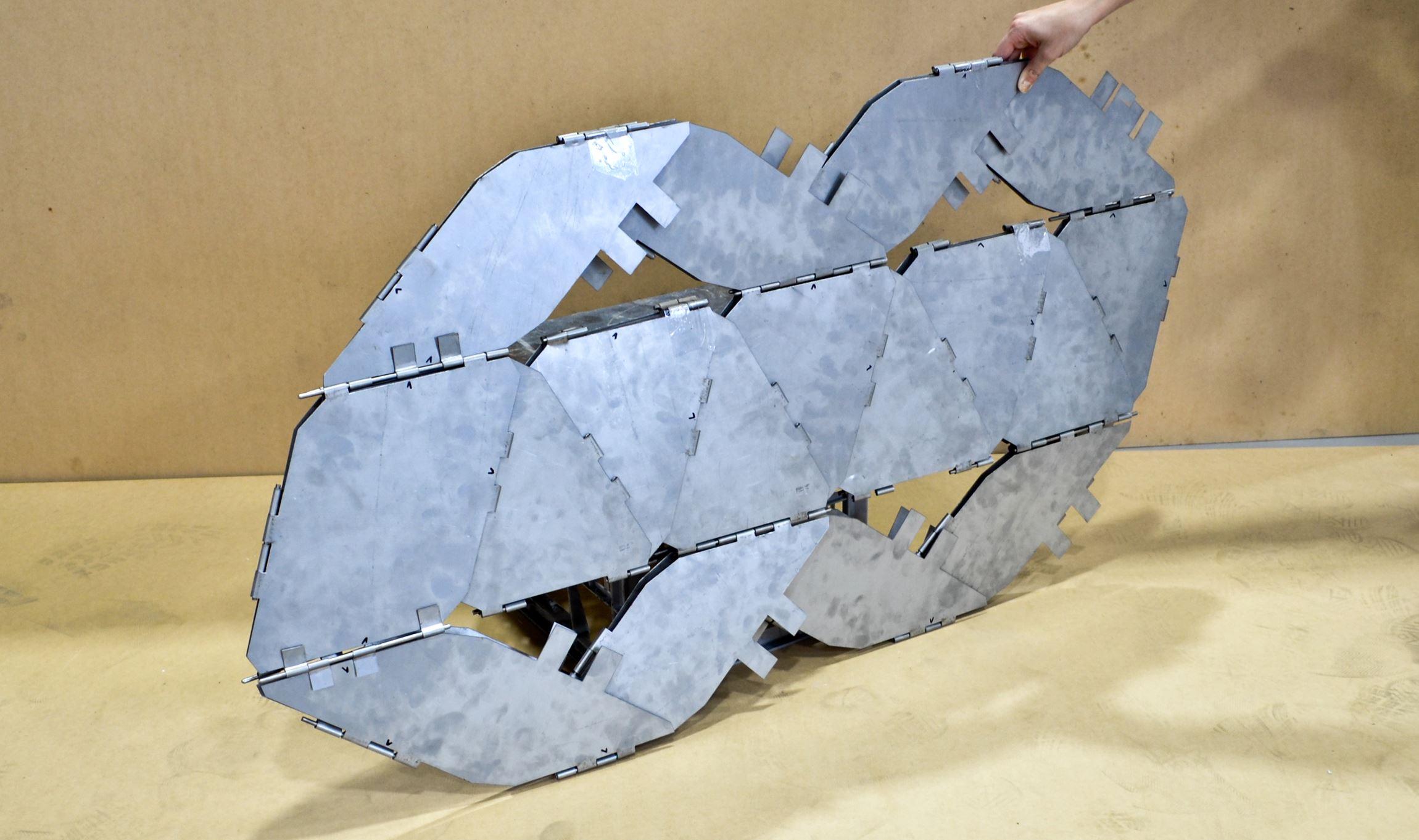
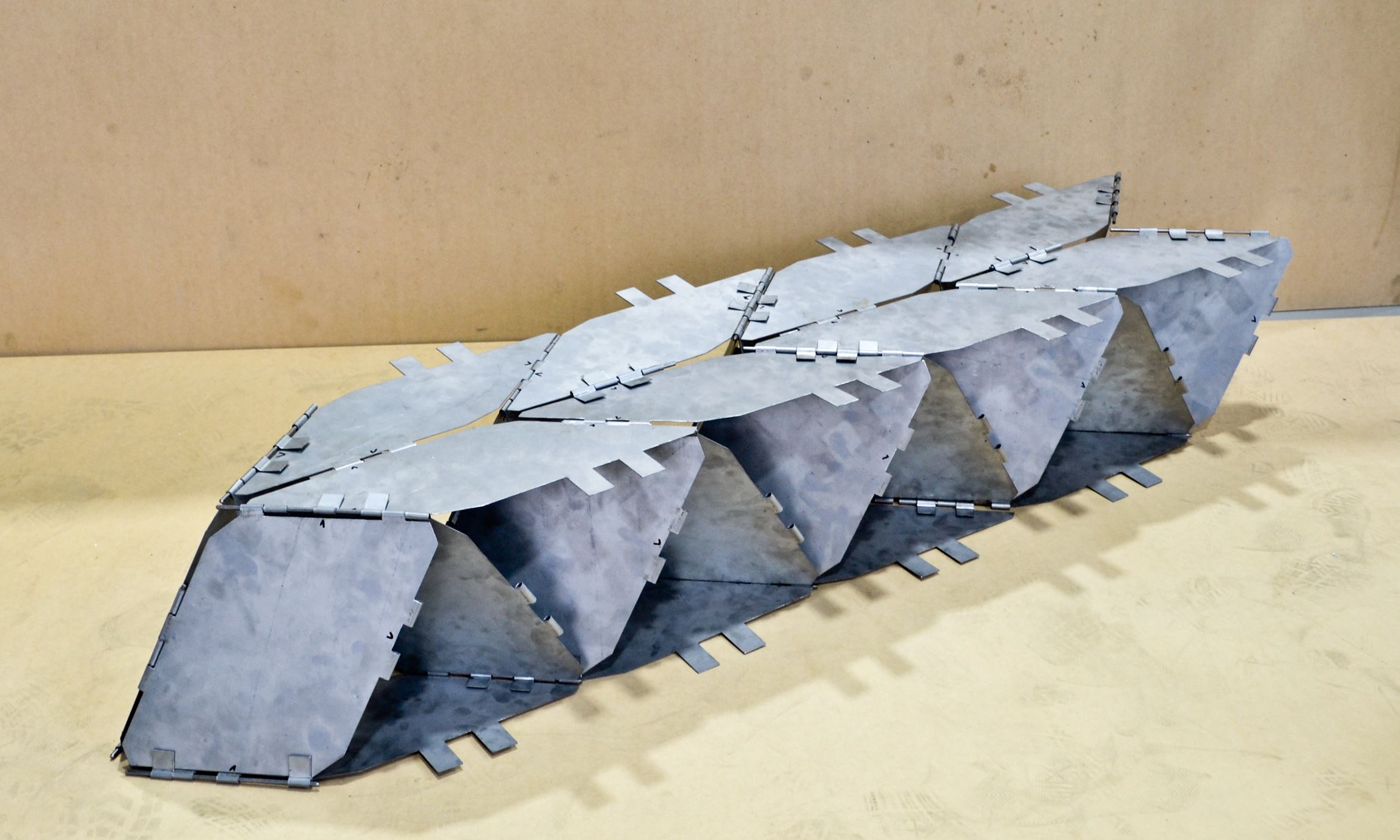
Accordion Shelters
This paper introduces two new accordion-type shelters with modified geometries for enhanced structural stability and stiffness. The first, a distributed frame accordion shelter, separates fully folded accordion frames with spacer plates, aligning transversely for improved stiffness and flexural rigidity while preserving floor area. The second, a diamond wall accordion shelter, incorporates secondary wall elements to increase wall depth and address rotational-transverse displacements at roof–wall junctions. Both types feature geometric parameterization and full-scale prototypes, with good correlation between design and construction, and a numerical investigation confirms their increased flexural rigidity compared to standard accordion forms. Further information: DOI: 10.1115/1.4032441.
Rigid-Foldable Tubular Arches
This paper examines the structural feasibility of non-rectilinear, rigid-foldable cellular materials, particularly as deployable arch structures. It focuses on a new type of folded tubular arch, analyzing its failure mechanisms, including hinge rotation and plate buckling, through experimental and numerical methods. The study also establishes a common geometric description for three different origami-inspired tubular arches and assesses them under three-point loading. Among these, the double-kite arch, a novel design presented in this paper, exhibits the highest failure load. Further information: DOI: 10.1016/j.engstruct.2017.04.037.
Bending-Active Kirigami
This paper introduces ‘bending-active kirigami’, a new family of pop-up kirigami patterns that transform flat sheets into double-curved surfaces through a simple 1-DOF actuation mechanism. The design technique combines the ‘elastica’ solution for elastic deformation of slender rods with kirigami pop-up mechanics, offering a rapid, intuitive method for creating formed surfaces and their kirigami patterns. The study extends this concept to various patterns based on different elastica solutions and pop-up mechanisms. It also applies bending-active kirigami to a deployable structure, validating the design method with measurements from a physical prototype. Further information: DOI: 10.1016/j.ijsolstr.2022.111864.
Related Publications
Lee, T.-U., Gattas, J. M., & Xie, Y. M. (2022). Bending-active kirigami. International Journal of Solids and Structures, 254, 111864. https://doi.org/10.1016/j.ijsolstr.2022.111864
Gattas, J. M., Lv, W., & Chen, Y. (2017). Rigid-foldable tubular arches. Engineering Structures, 145, 246–253. https://doi.org/10.1016/j.engstruct.2017.04.037
Lee, T.-U., & Gattas, J. M. (2016). Geometric design and construction of structurally stabilized accordion shelters. Journal of Mechanisms and Robotics, 8(3), 031009. https://doi.org/10.1115/1.4032441
Lee, T., & Gattas, J. (2016). Experimental analysis of a reverse elastica pop-up geometry. In 8th international conference on fibre-reinforced polymer (FRP) composites in civil engineering (CICE 2016). Retrieved from https://espace.library.uq.edu.au/view/UQ:500012
Cash, T. N., Warren, H. S., & Gattas, J. M. (2015). Analysis of miura-type folded and morphing sandwich beams. In ASME 2015 international design engineering technical conferences and computers and information in engineering conference, american society of mechanical engineers (pp. 1–9). https://doi.org/10.1115/DETC2015-46380
Gattas, J. M., & You, Z. (2015). Geometric assembly of rigid-foldable morphing sandwich structures. Engineering structures, 94, 149–159. https://doi.org/10.1016/j.engstruct.2015.03.019
Gattas, J. M. (2013). Morphing origami panels: Geometry and construction. In Proceedings of the 15th young researchers’ conference (pp. 40–41). IStructE.